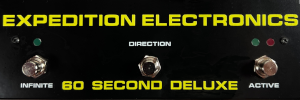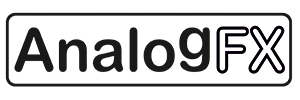Showing posts sorted by relevance for query Blue Noise. Sort by date Show all posts
Showing posts sorted by relevance for query Blue Noise. Sort by date Show all posts
Tuesday, March 22, 2011
Noise Hero Kit Now Available
YouTube Uploaded by ChrisLody on Mar 18, 2011
"Noise Hero kits are now available to buy from http://www.symetricolour.etsy.com in USD and http://www.folksy.com/shops/ChrisDodsworthDesign in the GBP. There is also a pre built version for sale.
The Noise Hero is a lofi noise maker with a lot of routing options built onto a piece of stripboard using a 4093 quad nand chip. This video shows some of the example sounds that are located on the CD rom that comes with the noise hero.
For more about the Noise Hero see this youtube video: http://www.youtube.com/watch?v=gd9QBBueroA"
Uploaded by ChrisLody on Feb 16, 2010
"First build test of my Noise Hero (previously known as ill logic)
Noise hero is a little 4093 based noise maker which is available to buy from http://www.symetricolour.etsy.com in USD and http://www.folksy.com/shops/ChrisDodsworthDesign in the GBP. There is also a kit version available. I may also produce a boxed version depending on demand.
It is controlled by 5 knobs, 8 switches and one push button.
It has 3 oscillators (Yellow, Green and Blue knobs). Osc 1 produces audio frequency ranges whilst osc 2 and 3 produce LFO and audio freqencies.
Osc 1 goes to the output through a simple passive filter (Red knob) while osc 3 can be switched to the output but bypasses the filter.
Osc 3 modulates osc 1's pitch by the ammount set by the orange knob. This modulation can be shaped by 2 shapers which can be switched on and off. Osc 3 can also gate osc 2.
Osc 2 can gate osc 1 and passes through an inverter after which it can gate osc 3.
There is also a push button to trigger the unit (actually a power button), a switch to lock the power on, a power led indicator and a battery cap switch which lets the unit run for a short time after power off for springy type noises.
A certain configuration can even produce sounds that stop after a time determined by osc 3 which is good for maker sound effects. (see 4:44 onward)
The knobs all go backward as you may have noticed. This is because I'm using logarithmic knobs which make the oscillators easier to contol when wired up the wrong way round.
This is my first build. Everything works perfectly but I found I'd barely alloed myself enough room to fit everything on the stripboard. I'll make the next one bigger.
I'm keeping this one!"
Friday, October 02, 2009
4MS Noise Swash module #1
YouTube via opsysbug
"New blue noise swash module. With a Plan B Model 13.
Look at the pretty lights ! just a teaser."
4MS Noise Swash module #2
"Blue beautiful Noise Swash. Modulated by MakeNoise Wooglebug.
Bright lights ! Another little tease."
Friday, December 23, 2016
Noise Reap Bermuda Eurorack VCO Demo
Published on Dec 23, 2016 FatSynthDude
"I made this one with the focus being on the pair of Noise Reap Bermuda's I received today. These are fairly simple triangle-core oscillators with triangle, sine, and pulse wave outputs. What makes them different from other VCO's is that there's a control onboard to route the triangle wave back into the core. It's a simple trick that a lot of oscillators can do already with some self-patching, but it's neat that it's a built-in modulation here with a built-in attenuator. For those that have never tried feeding an oscillator back into itself, this results in distortions in the waveform. It's a trick that a lot of people forget exists, so it's handy to have a dedicated knob for it. The other special feature is the price. These are only $65 each. In my brief experience with them so far, they're fairly stable and track CV very well. I haven't done a side-by-side comparison to my other oscillators yet, but it will be interesting to see how they compete against the more expensive ones. Regardless of how well they compare, I'd say they're worth the phenomenally low price.
So for this composition, the Bermudas handle the bass synth and the lead synth. The Bassier one is ran through the 4075 and the lead goes through the Polivoks filter.
Wednesday, January 05, 2011
Exclusive: the bluebox synthesizer
via Daniel:
"No one outside the project has seen this yet. It's a concept picture of the new look of the bluebox synthesizer.
This look will closely assemble how it will look in about one month from now. The only difference is that the LED's will be replaced with clear LED's that is blue when litten.
more about the synthesizer here... digitalsoundchips.com"
Update: in case you missed the history: "The blue box was originaly a device to call for free. Used by the early hackers called phone phreaks. To the left [below] you can see the blue box built by Steve Wozniak, on display at the Computer History Museum.
Every thing went in another direction in the early 70ties when Steve Jobs and Steve Wozniak the founders of Apple the worlds largest computer company and their friend Captain Crunch, was making a "free" call from a phone booth to get some friends to pick them up.
Steve Jobs was making the call as the cop showed up when Jobs was standing in the phone booth with the blue box in his hand. The Police probably thought they were like drugies or something because Wozniak had long hair. What is this, the police said? Asking about the divice that wozniak desperatly tried to hide, sneaking it into his coat pocket. When you punch the buttons they all make tones, so Wozniak said: It's an electronic music synthesizer. The police man got them all into the police car, and drowe them down to the station, stating that a man named Moog beat them to it. And the rest is history. The thought about the blue box as a electronic music synthesizer was born."
True? This is: "Some of the more famous pranksters were Steve Wozniak and Steve Jobs, founders of Apple Computer. On one occasion Wozniak dialed Vatican City and identified himself as Henry Kissinger (imitating Kissinger's German accent) and asked to speak to the Pope (who was sleeping at the time).[3]"
On the bluebox synthesizer (demos on site):
"Digital Sound Chips Blue Box is the worlds smallest fully featured synthesizer. It will easily fit into your pocket or your hand. When others only bring you toys at this size, we bring you the real deal. Fat basses, drums, leads, you name it.
The Blue Box pocket synthesizer use digital synthezis to make raw digital sounds that are impossible to make with analog gear. The Blue Box is based on a new intuitive menu system without submenus, that enable you to play tunes and change any sound parameter on the fly with a minimal user interface.
You can even use it as a MIDI controller, and play on other synthesizers and control knobs in you music sequencer on your computer. Have you ever dreamed of playing live with a small device like Kraftwerk in the 80's? Well now you can. It can also be controlled from a MIDI-keyboard or sequencer via MIDI.
* Casing dimensions: (W x D x H) 7.5cm x 2.5cm x 11cm.
* Casing dimensions: (W x D x H) 2.95" x 0.99" x 4.38".
* MIDI-in: Syncs to MIDI clock, Responds to Program Change, Pitch Bend, Note Velocity, Expression Controller, Breath Controller, full parameter control by CC messages and more.
* 3.5mm stereo plug for line out (can drive headphones).
* Uses AAA batterys for power (24 hour battey life).
* Mechanical on/off switch.
* Digital endless knob for real-time editing and performance.
* 2 LED's for fast parameter visualization.
* 72 preset sounds, that can be edited and saved.
* One octave keyboard, with real-time access to 3 octaves.
* Free sound editor for MIDI control via your computer.
* MIDI-out: Notes, Program Change, mod. wheel, CC and more is available via breakout cable.
* 2 OSC's with 32 different waveforms to choose from.
* 2 Digital filters. Low Pass in series with High Pass.
* 1 Preamp output stage. Can be overdriven for distortion.
* 3 Fast step sequencers, for SID drums, arpeggios and more.
* 1 LFO. Wide range and 32 different waveforms and more.
* 3 ADSR's, for filter, volume and sync.
* PM (phase modulation), Subtractive and True Noise syntesis.
* Uniqe percussion mode for live performance and more."
Friday, November 17, 2017
ARC Noise Rainbow Eurorack Analog Synthesizer Module
Note: Auction links are affiliate links for which the site may be compensated.
Published on Nov 9, 2016 ARC
via this auction
"The Noise Rainbow is a source of analogue noise and digital pseudorandom pulses. Both sources are generated by new old stock Soviet components (KГ401 and К176ИР10).
The Analogue Noise submodule provides white, grey and coloured noise. The colour output is continuously variable between red, blue and violet for tailored noise.
The Digital Noise submodule produces digital noise that can be swept down to a low frequency random pulse train. The rate can be voltage controlled, or externally clocked to extend the range into a digital VCO reminiscent of chiptune sounds."
Published on Nov 9, 2016 ARC
via this auction
"The Noise Rainbow is a source of analogue noise and digital pseudorandom pulses. Both sources are generated by new old stock Soviet components (KГ401 and К176ИР10).
The Analogue Noise submodule provides white, grey and coloured noise. The colour output is continuously variable between red, blue and violet for tailored noise.
The Digital Noise submodule produces digital noise that can be swept down to a low frequency random pulse train. The rate can be voltage controlled, or externally clocked to extend the range into a digital VCO reminiscent of chiptune sounds."
Friday, November 18, 2011
Blue Lantern NOISE GENERATOR AND WAVE FOLDER

via this auction
See the seller's other items for more.
"Introducing the next lineup of module to get the Pro Panel treatment. It is the tried and true Analog Noise Generator, but the design was so slick I was able to fit a Lock Hart Wave Folder & Gate to Trigger converter. The entire back PCB area is less then 2" (1.5") in depth. It is made with SMT parts.
This is for Euro Format Modular Synth Cases. The user is to install this module themselves using a IDC cable which is included.
THE UNIT COMES WITH A 10 PIN TO 16 PIN IDC CABLE.
POWER SPECS: PLEASE READ THIS AND YOU SHALL NOT BE SORRY! THE MODULE CONFORMS TO THE NEWER DOEPFER POWER LAYOUT SCHEME. ON MY MODULES RED LINE IS (-12V) AND STARTS AT THE TOP.
THE SEQUENCE IS -12V/GND/GND/GND/+12V. SO +12V IS AT THE BOTTOM ON MY MODULES. ALL I DID WAS ROTATE THE DOEPFER STANDARD. THE MODULES COME SHIPPED WITH THE CABLE CONNECTED CORRECTLY. ALL YOU HAVE TO DO IS CONNECT THE RED STRIP TO YOUR -12V END ON YOUR CASE WHICH IF IT FOLLOWS MOST WILL BE AT THE BOTTOM. THERE IS A SILKSCREEN ON THE MODULE TO SEE THE LAYOUT ON THE HEADER ALSO.
THERE ARE SAFETY PTC RESETTABLE FUSES INSTALL ON THE MODULE THAT WILL OPEN THE CIRCUIT IF CONNECTED WRONG. BUT IT IS GOOD PRACTICE TO JUST READ DIRECTIONS. FEEL FREE TO EMAIL ME IF YOU JUST ARE NOT SURE HOW TO CONNECT THE MODULE TO THE EURO CASE FORMAT POWER STRIP.
MODULE
SPECS:
Width--4HP
Circuit 1: NOISE GENERATOR: White Noise, High Pass White Noise, Low Pass White Noise, Red Noise. There is a Trimmer on the PCB that will adjust the Loudness of the core Noise generator. 100% Analog. ALL OUTPUTS.
Circuit 2: Lock Hart Wave Folder: There is (1) Input, (1) Double Pulse Output, (1) Folded Output. In order to control the actual folding, an Attenuator is needed right before the Input Chain in your Patching. Sine or Triangle Waves work best here, but you are free to Experiment.
Circuit 3: Gate to Trigger Converter. This will make a Gate into a short Pulse. Useful for triggering Drum Synths. Again you can also experiment with feeding in slow LFO wave forms and hearing the Audio Result.
All that in 4HP!"

Tuesday, October 28, 2014
Blue Lantern Asteroid Mini Synthesizer 20 HP Eurorack Module
Note: Auction links are affiliate links for which the site may be compensated.

via this auction, via MATRIXSYNTH CLASSIFIEDS
"The sale includes, M3 panel screws, and the ribbon cable to power up the module.
Free shipping to celebrate release on this product.
[Audio demos here]
Asteroid Mini Synthesizer
------------------------------
Format: Euro Doepfer compatible, 3U height (5.05")
Power Current Consumption: +108mA, -83mA
Depth: less then 45mm
Circuits involved: VCO, VCA, Envelope Generator, Sub Harmonic Generator, Noise Generator, and trigger striking circuit.
VCO
-------------------------------------------------------------
-VCO type: Triangle core, transistor discrete design.
-VCO waves: Triangle, Sine, Square, Sub Harmonic pulse.
-Noise Generator flavors: White and High Pass White Noise.
-VCO modulation sources: (2) Direct input CV's labeled 'PCV',
(1) Hi spectrum Linear FM input, (1) Variable sync input, (1)
Attenuated CV labeled 'Mod CV'.
-Internal hard wired modulation: Bi-polar Decay source, and 'Pop CV' trigger spike. The Pop gives a small punch to the sound.
Envelope Generator
--------------------
Timings: 1uf Capacitor charge, 9.7uf cap, or middle position is 0.47uf cap timing. These effect the snappy feel of the decay. Middle position of the switch is best for drum and short percussive sounds.
-Trigger Striking System: The internal trigger conditioning circuit allows from 2.5v to 10v input for successful triggering of the envelope generator. The internal trigger voltage is about 12v. This allows for big drum sounds, and strike effect. There is a 'Thru' jack to pass the input signal to another Asteroid Synth for daisy chaining.
Mixer
--------------------
There is a summing mixer with direct output (pre vca and pre booster), this makes the module act like a normal vco for you to patch to a filter, etc. You also have a mixer input jack so that you can mix another vco or two Asteroid Mini Synths together.
VCA and Analog Delay
-----------------------
The vca can be patched directly into, bypassing the internal summing mixer. This is great for send and return. You would patch from the Asteroid Mini synth's 'Sum' to a filter for example, then patch back into 'Ext VCA' to return the processed sound. The booster knob will boost signals also
patched into the Ext VCA jack.
-The Delay has modulation for: Repeat, Time, and level.
-The VCA is a high quatity cool audio v2164 based vca with its own attenuated 'MODV' cv input.
 Final Output
Final Output
-------------------------
You get a Dry post vca synth level output, and a 'PERC'
output. The difference is the 'Perc' output can have the
delay fx mixed in.
There is a line Level 1/4" output jack.
All outputs can be used simultaneous.
***Some odd ball notes about the module
----------------------------------------
In order to use the Square wave as a sound source you have to patch from the jack above the toggle switch and select the Sqaure wave, and patch that into the Mixer input 'Mix'. One interesting patch is to patch the square wave into a CV input to create a Saw wave. I did this because I wanted to give you the option. If you wanted only the square wave sound source after you did the mix in patch, you can turn off the triangle or sine wave as that has no level knob. You can also use this method to make noise bursts with no vco waves mixed in. The noise generator does not have to be patched like the square wave, it is internally routed to the mixer. Just use the Noise Level knob to adjust the noise level. On the Direct Noise ouput, the level knob does not change anything, it is a direct out."

via this auction, via MATRIXSYNTH CLASSIFIEDS
"The sale includes, M3 panel screws, and the ribbon cable to power up the module.
Free shipping to celebrate release on this product.
[Audio demos here]
Asteroid Mini Synthesizer
------------------------------
Format: Euro Doepfer compatible, 3U height (5.05")
Power Current Consumption: +108mA, -83mA
Depth: less then 45mm
Circuits involved: VCO, VCA, Envelope Generator, Sub Harmonic Generator, Noise Generator, and trigger striking circuit.
VCO
-------------------------------------------------------------
-VCO type: Triangle core, transistor discrete design.
-VCO waves: Triangle, Sine, Square, Sub Harmonic pulse.
-Noise Generator flavors: White and High Pass White Noise.
-VCO modulation sources: (2) Direct input CV's labeled 'PCV',
(1) Hi spectrum Linear FM input, (1) Variable sync input, (1)
Attenuated CV labeled 'Mod CV'.
-Internal hard wired modulation: Bi-polar Decay source, and 'Pop CV' trigger spike. The Pop gives a small punch to the sound.
Envelope Generator
--------------------
Timings: 1uf Capacitor charge, 9.7uf cap, or middle position is 0.47uf cap timing. These effect the snappy feel of the decay. Middle position of the switch is best for drum and short percussive sounds.
-Trigger Striking System: The internal trigger conditioning circuit allows from 2.5v to 10v input for successful triggering of the envelope generator. The internal trigger voltage is about 12v. This allows for big drum sounds, and strike effect. There is a 'Thru' jack to pass the input signal to another Asteroid Synth for daisy chaining.
Mixer
--------------------
There is a summing mixer with direct output (pre vca and pre booster), this makes the module act like a normal vco for you to patch to a filter, etc. You also have a mixer input jack so that you can mix another vco or two Asteroid Mini Synths together.
VCA and Analog Delay
-----------------------
The vca can be patched directly into, bypassing the internal summing mixer. This is great for send and return. You would patch from the Asteroid Mini synth's 'Sum' to a filter for example, then patch back into 'Ext VCA' to return the processed sound. The booster knob will boost signals also
patched into the Ext VCA jack.
-The Delay has modulation for: Repeat, Time, and level.
-The VCA is a high quatity cool audio v2164 based vca with its own attenuated 'MODV' cv input.
 Final Output
Final Output-------------------------
You get a Dry post vca synth level output, and a 'PERC'
output. The difference is the 'Perc' output can have the
delay fx mixed in.
There is a line Level 1/4" output jack.
All outputs can be used simultaneous.
***Some odd ball notes about the module
----------------------------------------
In order to use the Square wave as a sound source you have to patch from the jack above the toggle switch and select the Sqaure wave, and patch that into the Mixer input 'Mix'. One interesting patch is to patch the square wave into a CV input to create a Saw wave. I did this because I wanted to give you the option. If you wanted only the square wave sound source after you did the mix in patch, you can turn off the triangle or sine wave as that has no level knob. You can also use this method to make noise bursts with no vco waves mixed in. The noise generator does not have to be patched like the square wave, it is internally routed to the mixer. Just use the Noise Level knob to adjust the noise level. On the Direct Noise ouput, the level knob does not change anything, it is a direct out."
Friday, May 17, 2019
The Seventh Wave Festival of Electronic Music #7 w/ Delia Derbyshire Collaborator David Vorhaus
David Vorhaus Analogue Electronic Music 1979 Published on Sep 13, 2009 JeffreyPlaide
Update: Festival info further below. Thought I would start with a couple of videos featuring David Vorhaus.
"In this historical video excerpt, David Vorhaus talks about two of his analogue inventions - the MANIAC analogue sequencer, and the Kaleidophon from 1979.
The MANIAC (Multiphasic Analog Inter-Active Chromataphonic (sequencer)) was an analogue sequencer having variable step lengths, and the ability to split sequences into several smaller groupings giving considerable sonic potentiality. Addition and subtraction of events was possible, as well as the possibility to chromatically correct the output during performance. David could program his MANIAC sequencer to play a background rhythm or combination of musical events, to then improvise over the top with another instrument or synthesizer.
The Kaleidophon was a double-bass-like instrument using four velocity-sensitive ribbon controllers instead of strings. The instrument is played entirely using the left hand, leaving the right hand free to manipulate the sound via a number of controllers and a joystick.
David speaks about the processes of making electronic music, and the developments that such possibilities can provide for the imaginative electronic musician. This excerpt is taken from the BBC 1979 documentary entitled "The New Sound of Music" hosted by Michael Rodd."
WHITE NOISE Electric Storm in Hell [not quite Full Album]
Published on Mar 9, 2013 musick2138
"The Seventh Wave presents
White Noise - a Fifty Years Celebration of An Electric Storm & Other Sonic Adventures
Voyd - live set / White Noise - live set / White Noise - talk and q&a
Friday 14 June 2019 Doors 6.30 pm.
Curfew 10.00 pm.
 The Blue Orange Theatre, 118 Great Hampton Street, Jewellery Quarter, Birmingham B18 6AD.
The Blue Orange Theatre, 118 Great Hampton Street, Jewellery Quarter, Birmingham B18 6AD.White Noise - An Electric Storm - Review
When White Noise's debut album, An Electric Storm, landed on Island Records in 1969, it must have sounded like nothing else. Packaged in a striking black and white sleeve that pictured a spark of lightning streaking across a black sky, this was an album that - quite rightly as it turned out - resembled as much a scientific experiment as any conventional musical document.
White Noise came into being when David Vorhaus, an American electronics student with a passion for experimental sound and classical music attended a lecture by Delia Derbyshire, a sound scientist at the BBC's Radiophonic Workshop whose claim to fame was writing the original Doctor Who theme tune. With the help of fellow Radiophonic Workshop composer Brian Hodgeson, Vorhaus and Derbyshire hunkered down at Kaleidophon Studios in Camden to pen an album that reconciled pop music with the experimental avant-garde. The result is a set of eerie, delightful songs that, for all their surface simplicity, shimmer with vestigial synthesiser swells, strange echoes, disembodied voices, and distant music-box trills.
Outside of a few equally adventurous '60s releases - the debut album from US psychedelic pioneers The United States Of America, for instance - this is pretty much uncharted territory, particularly for a major label release. On ''My Game Of Loving'', a dozen multi-tracked voices built to a panting orgasm, while the closing ''Black Mass An Electric Storm In Hell'' ushers the record to a freeform close in a clatter of freeform drums, cavernous echo and chilling, animalistic screams. Perhaps unsurprisingly, An Electric Storm would struggle to find an audience on its release, and in the following years, great leaps in synthesiser technology somewhat diminished White Noise's experimental achievements. One thing that would remain timeless, however, were the songs themselves. An Electric Storm would later become a key inspiration on bands like Add (N) To X and Broadcast, synthesiser explorers who picked through these primitive, vestigial sound experiments, took careful notes, and eventually, set out to craft their own futuristic pop lullabies.
http://www.bbc.co.uk/music/reviews/pq9x/
The other two dates of the festival feature:
Banco de Gaia (Toby Marks) - he will once again be accompanied by Patrick Dunn on visuals (Patrick produces visual content for Tangerine Dream!!!).
The Black Dog is a British electronic music group, founded by Ken Downie along with Ed Handley and Andy Turner. The group are considered pioneers who, along with acts like Autechre, Aphex Twin, LFO et al came to define the UK techno movement in the early 1990's.
For further information email theseventhwave@btinternet.com
Tickets available at https://www.skiddle.com/groups/theseventhwave/"
Monday, April 28, 2025
New Eurorack Modules Coming From Doepfer
Doepfer will be showcasing the above new modules at SUPERBOOTH25. Details on each follow.
Check with dealers on the right for upcoming availability.
Module A-119-2 is kind of a dual version of module A-119 without envelope follower. Instead two amplifiers are available and the module width is 4 HP only.
The module contains two amplifiers with separately adjustable amplification levels. Each channel is equipped with an overload display. The module can be used also for stereo signals, e.g. the stereo output of a smartphone.
Controls and displays:
Level 1/2: manual control of the amplification in the range 0 - about 45.
Overload 1/2: overload LED, begins to light up for output levels beyond about 10Vpp (+/-5V)
In 1: audio input 1 (monophonic or stereophonic, see technical details)
In 2: audio input 2 (monophonic)
Out 1/2: audio output (monophonic)
Technical details:
for higher amplifications the two amplifiers can be daisy-chained
normalling options: the signal applied to socket In 1 can be normalled to socket In 2 in different ways by means of a jumper on the pc board:
socket In 1 is connected via a mono patch cable (standard patch cable) to a monophonic signal and this signal is normalled to socket In 2 (i.e. the same input signal for both sub-units): jumper on pin header JP2 in upper position
socket In 1 is connected via a 3.5 mm stereo TRS cable to a stereophonic signal and the second channel of the stereo signal is normalled to socket In 2: jumper on pin header JP2 in lower position
no normalling: jumper is removed from pin header JP2
all inputs and outputs are DC coupled. Thus the module can be used also for the amplifications of control voltages.
Wednesday, January 09, 2019
Blue Lantern ASTEROID SNARE DRUM
via Blue Lantern
"What does this do?
This is a sound generator module with 3 oscillators + noise generator. This module is a complete mini synthesizer that can easily produce snare drum sounds. A 'trigger' signal is patched in order to hit the snare drum. The bottom row contains an internal mixer where you mix in 2 shell generator oscillators, one thud oscillator, and a noise generator.
The Noise generator can be used for your other modules. You can also patch into the discrete transistor vca, breaking the switch jack to replace the noise generator with an external audio signal (synth level).
The Filter on the 'Impact' signal path was carefully designed just for snare drum tone control. It sounds very nice. It will not self oscillate, but the Q control can go very high in frequency.
There is an accent control circuit in order to vary the loudness of the snare drum.
History of the design:
The Asteroid Snare drum started out on bread board as a TR 606 snare drum. That design only contains one oscillator, a transistor based noise generator, and a 'clipper' brute vca. It is a nice efficient old design, but it is too simple and boring. I decided to add (2) of the original oscillators, and replaced the noise generator with a digital based noise generator to make sure all production units were alike. The snare drum still was missing fullness, so I designed an addition oscillator called 'thud'. The poor vca from the original design was removing all the additional harmonics, so that was replaced by a discrete vca, and I added tonal controls to the IMPACT signal, and the THUD signal path.
All of this amounts to about 200+ smt parts. Far exceeding the original design. I don’t think there is another analog snare drum out there with the Asteroid Oomph.
Price $169.00"
Thursday, September 06, 2018
Endorphin.es BLCK NOIR (7 analogue drums with VCF, modulation, performance controls, FX & more!)
Published on Sep 6, 2018 DivKidVideo
"**TIMING INDEX / SECTIONS BELOW** Here's the new BLCK_NOIR from Endorphin.es. It's a 7 voice drum module with 7 all analogue and discrete circuit drum voices. There's kick, snare, tambourine, closed and open hi hats, metallic beat and cymbal. Endorphin.es say this is fine tuned for Darkwave and Techno but you can of course use it for a wide range of styles. It's got a classic early/vintage drum machine vibe similar to the CR-78 in nature but with a few updates. You can tune and adjust the length of the kick (as well as saturate the mix out with it) there's tuning and noise level / noise decay for the snare then 5 additional noise based voices that share blend controls to adjust from white or metallic noise and you can also bit crush these for further variation. There's CV inputs for noise blend, bit crush, bass drum decay and snare decay/noise. There's an on board isolator style filter that will low pass and high pass and a resonance control both with CV. You can clock the module which allows you to play fills holding the drum buttons and as a secondary function with no clock you can finger drum or mute those parts too. There's a bonus sample and hold generated when the module is clocked (great to patch back into the module). Not only can you trigger the drums but you can also control them with an on board VCA accepting 0-5V to control the velocity of each sound. There's individual outs, a mono mixed out, a stereo line level / headphones out and those 8 great 'Airways' FX we've seen in the Grand Terminal. There's a lot to get through so watch in full or skip around with the sections below which will link you to each part of the demo. Cheers! :)
https://endorphin.es
TIMING INDEX / SECTIONS
Sunday, October 13, 2019
JMT DNVO-1 Desktop Synthesizer with pattern generator, 3 Sub-Oscillators, CV In
Note: Auction links are affiliate links for which the site may be compensated.
Published on Mar 29, 2016 JMT SYNTH
via this auction
Pic of the inside below.
"Up for sale is one of our three beloved DNVO-1s from JMT Synth. This is his flagship model and the most requested desktop synth in our studio. For fans of Skychord/ KingCapitolPunishment/ Soma, though nothing in the 'noise/drone synth' category can touch the versatility and musicality of JMT's top shelf designs. Additionally, while the Skychord and Trogotronics synths are amazing in their own right, they are made using PCBs. JMT synths are 100% hand made, hand-wired and discrete, with no two sounding alike. This particular box was built to order by designer Tetsuji Masuda, and purchased directly from JMT Japan as a backup when our others (including the one with the blue status light in the video below) were tied up making otherworldly sounds for season two of a particular N__f___ series we worked on. It has seen no real use outside of testing. 100% hand made, hand-wired and discrete. CV input (VCO), 3 sub-oscillators, noise generator, 3-range VCF that can be tuned to the input signal, proprietary oscillator, military-grade build spec, can run on 1 9V battery or standard center-negative 9v PSU. I own a number of JMTs and this was my third DNVO1. (We're also parting with two of our UNVO1s--click on "seller's other items" to check them out. They're in equally pristine condition.) Ships with full factory warranty, in OB with panel diagram.
Published on Mar 29, 2016 JMT SYNTH
via this auction
Pic of the inside below.
"Up for sale is one of our three beloved DNVO-1s from JMT Synth. This is his flagship model and the most requested desktop synth in our studio. For fans of Skychord/ KingCapitolPunishment/ Soma, though nothing in the 'noise/drone synth' category can touch the versatility and musicality of JMT's top shelf designs. Additionally, while the Skychord and Trogotronics synths are amazing in their own right, they are made using PCBs. JMT synths are 100% hand made, hand-wired and discrete, with no two sounding alike. This particular box was built to order by designer Tetsuji Masuda, and purchased directly from JMT Japan as a backup when our others (including the one with the blue status light in the video below) were tied up making otherworldly sounds for season two of a particular N__f___ series we worked on. It has seen no real use outside of testing. 100% hand made, hand-wired and discrete. CV input (VCO), 3 sub-oscillators, noise generator, 3-range VCF that can be tuned to the input signal, proprietary oscillator, military-grade build spec, can run on 1 9V battery or standard center-negative 9v PSU. I own a number of JMTs and this was my third DNVO1. (We're also parting with two of our UNVO1s--click on "seller's other items" to check them out. They're in equally pristine condition.) Ships with full factory warranty, in OB with panel diagram.
Saturday, March 14, 2020
Akai MPC 2000XL Custom “Black Modular” Phenolic & Walnut Bezel
Note: Auction links are affiliate links for which the site may be compensated.
This one was spotted and sent in via M Me.
via this auction
"Custom Akai MPC 2000XL | Caramel Phenolic & Walnut Bezel, MC-2000XL Card Reader
Black Vinyl Wrap, 32MB RAM, 8 Output / Digital I/O Board, v.2 LCD Screen, Fat Pads
Just released October 2019, the 1st unit sold in 4 days. We are now making these units per individual order. Place your order for this custom MPC-2000XL unit by Big Noise MPC. Built to order; we can build your unit to your specifications, colors and desired extras. Price may very depending upon options and part/s availability. Custom builds are delivered within 30 business days.
This one was spotted and sent in via M Me.
via this auction
"Custom Akai MPC 2000XL | Caramel Phenolic & Walnut Bezel, MC-2000XL Card Reader
Black Vinyl Wrap, 32MB RAM, 8 Output / Digital I/O Board, v.2 LCD Screen, Fat Pads
Just released October 2019, the 1st unit sold in 4 days. We are now making these units per individual order. Place your order for this custom MPC-2000XL unit by Big Noise MPC. Built to order; we can build your unit to your specifications, colors and desired extras. Price may very depending upon options and part/s availability. Custom builds are delivered within 30 business days.
Thursday, October 23, 2014
Mothership Transmission: Basimilus Acid
Mothership Transmission: Basimilus Acid from Joseph Fraioli on Vimeo.
"trigger shifting using the delptronics triggerman and 4ms SCM as trigger sources with shifting modifications coming from the SSF propagate and 4ms SCM breakout.
slight changes to the parameters of these modules slowly change the shift of the patterns over longer periods. this is achieved by modulating the SSF propagates master delay modulation and enable inputs then outputting those triggers to the 4ms SCM to be further shifted using the SCM breakout and then fed into the 4MS RCD for additional triggering.
kick: blue lantern asteroid bd v4
snare: make noise mysteron modulated by the mod can quad lfo > Make Noise erbe verbe moded by an intellijel dixie.
hats: SSF quantum rainbow > Modcan Dual Delay. dual delay moded by an SSF ultra random analog.
acidy bass: Noise Engineering Basimilus Iteritas in bass mode >make noise MMG> mungo d0 with macro machines storage strip sequenced by the 4ms scm. pitch controlled by pressure points which is triggered by the 4ms SCM and pitch quantized by the intellijel upscale. modulation sources from a doepfer a147 and modcan quad lfo.
sparse melodic bass thing in first half: make noise DPO >Make Noise MMG > TipTop ZDSP with halls of Valhalla card. pitch sequencing by the TipTop z8000. modulations from a make noise maths channel and SSF ultra random analog.
end ambience: qu-bit nebulae > RT60. WMD SSM used as a mute. granulated sound source is a piano melody.
no computers or external hardware were used in this performance :)"
Tuesday, January 16, 2018
An Interview with ERRORINSTRUMENTS' Paul Tas & New Product Announcements
The following is a fascinating look at the man behind ERRORINSTRUMENTS, Paul Tas. Note the questions are not mine, but were sent in with the full interview by inmar lsbtv grtz sleep good.
So how did all start? What was your life before "error instruments"?
- my life before error instruments can be described as a life of an artist in making sculptures and paintings. I was making sculptures from robots, called "the beeb" collection. It is a wooden robot with the concept that in the 50's, we have thought that robots will replace our jobs. However, with the influence of the media, and the medicines we take against emotions, figuratively we can say that we are the robot, and we get programmed by commercials and news. This robot has been a big succes due to the fact that it has been bought by numerous art collectors from different countries such as Japan and the United States. Furthermore, the collections had been sold also at auctions houses Christie's. Later on, I have started to work more in fashion and art and making moveable sculptures with electronics, I made also a traditional Dutch blue sculptures, big horse heads with the intention of giving a controversial thoughts and ideas. Moreover, sculptures about religion, which was a mix between Jesus and the corporate companies in the world with the meaning behind it, that they use the same propaganda to control people's mindset. I was also threatened by religious groups from Germany and Belgium during the time of exposition, not only me, but also the other people in the gallery. This situation has got to a point where i had to go to the court, but in the end I was free to go. Later i have done a project for Damian Hurst and made some installations together with BitMove for the "Love of God" exposition in the "RijksMuseum Amsterdam". As a result, more and more technical and electrical equipments got involved.
When did you have the idea for error instruments and what did the first steps look like?
- First of all, it is important that you know that as a child, i was not able to read, thus it was difficult to go to a normal school, and i have attended a special school, which allowed me to use my creativity, furthermore my writing was always full of mistakes and because in the 80's we used "Commodore 64", and every time i was writing something, a text appeared " Syntax ERROR". Therefore, the kids at my school, gave a nickname to me , called "Error". As a result, i got a fascination about the things that go wrong with machines, such as glitches or accidentally algoritmes and of course the sound of noises. By exploring the art of circuit bending and hardware hacking, i have found out that many people miss this, because the commercial products were created as a mainstream products, with a result for mainstream music. Thus, with the money that i have earned from art, I have started the shop, "ERROR INSTRUMENTS".
Do you have artistic projects beside error instruments?
- Yes, I perform under the name "ERROR EMPIRE", on several festivals. I have also some conceptional sound projects, called "Pink data". The idea of "Pink Data" is that is not controlled by humans, thus all the music is created by accidental algoritmes. I also make sculptures, with acoustic and electronic purposes. Furthermore, I am busy working on the modelar synthesizer and exploring control voltage. design eurorack modules for and special audience
What is the error philosophy?
LABELS/MORE:
DIY,
Error Instruments,
eurorack,
Ginko Synthese,
Interviews,
New,
New DIY,
New DIY in 2018,
New in 2018,
New Modules,
New Modules in 2018,
TINRS
Wednesday, February 08, 2023
"The Dreadnaught Factor" - Akai MPC X + Behringer 2600 Blue Marvin + ASM Hydrasynth + MINIFREAK...
video upload by Patrick Manderson
"'The Dreadnaught Factor' was recorded live early Saturday morning on January 21st 2023 using a MIDI sequencer, a room full of synthesizers and drum machines. Four analog mixers were used with a rack of outboard effects and mixed stereo. Mixing and automation was controlled by the sequencer directly to the synthesizers. The final reorded required manual muting of the of mixer channels to suppress the noise coming from some of the devices including the Korg Minilogue. The video was taken afterwards.
"The Dreadnaught Factor" was inspired by the box art of an early 80s video game for Intellivision. It featured a number of spaceships on a blue background much like the 2600 Blue Marvin featured in this music. The melody and chord arrangement originated from a short piece I created several years ago and later merged it with a small piece of unfinished music titled "Driod Mischief". I was pleased how the two sounded when arranged in this way. I look forward to finishing "Droid Mischief".
The Hydrasynth plays a few different roles in Dreadnaught, even doubling up with the BassStation adding filter modulations to the bass parts [3:23].
The Korg MS2000 never disappoints when you use its modulation sequencer and its charasmatic digital distortion. Several parts were played, twisting and swirling in the stereo field. Modulated tremolos off-rhythm and hypnotic.
Korg Minilogue XD has so much range - such a wide sweet spot of sound. Especially when you use the digital user oscillators. Resonating plucks and unnatural reverbs works well for my tastes.
The Behringer 2600 Blue Marvin and Model D is featured in the "Droid Mischief" part at [2:58].
The notes were played over MIDI. Volume modulation was controlled with CV from the *Akai Pro MPC X*.
The Model D ran through the inputs of the Roland TR8s for its Phaser effect. The TR8S did nothing else.
There are a few dark pad patches I re-use often on the Oberheim Matrix 1000 playing disonant chords throughout.
The Elektron Analog Rytm MkII provides most of the rhythms. Each of its 12 voices run on its own MIDI channel with a full complement of continuous controllers. Lots of CC modulation was used on some of the voices. The internal sequencer was not used. All notes and automation comes from the *MPC X*.
Arturia's MINIFREAK layered in a few bits throughout and is featured at the very end [6:11]. Macros were modulated from the *MPC X*.
Korg's Radias is 4 part multitimbral. On part #4 I keep a carefully curated drum kit synthesized with noise, sines and filters - mixed with some of the built in drum samples. Part #1 featured a vocal "ah-ha" patch [3:01] using one of the vowel waves, a formant insert effect and careful modulation of its dual filters.
My favorite guitar pluck patch on the Korg EX-8000 makes an appearance.
At the center of it all, the MPC X seemlesssly connects to everything and manages to keep all devices in perfect sync. As mentioned before - meticulous editing of MIDI events is a breeze and very comfortable over long editing sessions. Approximately 21 tracks were used including Control Voltage for the modulars.
Timeline:
00:00 project notes
00:08 introduction
00:33 The Dreadnaught
00:40 JX-08 - melodic pipes
00:58 Minilogue XD - haunted melody
01:22 Hydrasynth
01:43 MS2000 + Prophet REV2 picking up the pace
02:09 EX-8000 transition
02:16 Minilogue - vocal haunts
02:37 2600 Blue Marvin - the derelict
02:58 Model D + Radias - "Droid Mischief"
03:23 Hydrasynth doubling with the Bass Station
03:58 MS2000 + 2600 Blue Marvin - mono lead and accompaniment
04:22 GB4 + compressors + MINIFREAK handling the build up
04:51 Part 2 - "Derelict Adrift"
06:38 end titles"
Monday, April 29, 2013
Fat Bastard's 'Twins' !
 via Beermaster: (click the pics)
via Beermaster: (click the pics)"Thought I'd send you the latest info on my monster modular 'Fat Bastard' - Ross Lamond has constructed two huge amazing wooden cases based on a Matthew Goike design, these add another 1560 Hp of Euro to the existing system. We decided to call them 'The Twins'
 For the geeks amongst us here's the compliment of modules in the Twins:
For the geeks amongst us here's the compliment of modules in the Twins:VCOs:
Macbeth X-Series Dual Oscillator
Macbeth X-Series Oscillator x 2
Tip Top - Z300 Mk1 x 2
Make Noise - DPO
WMD - Synchrodyne
WMD - Phase Distortion Oscillator
MOTM - Morphing Terarium
Intellijel Design - Rubicon
Intellijel Design - Dixie II
ADAC System - VCO
Blue Lantern - Lunar Modulation
Analogue Systems - RS95
Analogue Systmes - Polyphonic Harmonic Generator +Expander RS370 +RS375
Buchla Clone - 258
 FILTERS:
FILTERS:Macbeth X-Series 'Backend' Filter
Macbeth X-Series Dual SV Filter
Schipmann- Multimode VCF-02
Cwejman - Res 4
Serge Res Equalizer
Intellijel - Korgasmotron II +Expander
Harvestman - Bionic Lester
ADAC System - VC Fixed Filterbank
Livewire - Frequensteiner
Doepfer - Vactrol VCF A101-1
Doepfer - Fixed Filterbank - A-128
Blue Lantern- Asteroid Operator
 Other Stuff:
Other Stuff:MOTM - Deflector Shield
Circuit Abbey - Impulse Drive
Circuit Abbey - Gravity Well
Circuit Abby - Unify
Livewire- Dual Cyclotron
Livewire -Dual Bisell Gen x 2
Synthetic Sound Labs - Modulation Orgy
Plan B - Heisenberg Generator - Model 24
Plan B - Dynamic Mult -Model 29
Plan B - Dual Timbral Gates - Model 13
 STG Soundlabs - Graphic Sequencer
STG Soundlabs - Graphic SequencerSTG Soundlabs - BAM x 2
Make Noise - Maths
Make Noise - Echophon
Make Noice - QMMG
Intellijel - Quadra
Intellijel- uVCA II
Intellijel - uFold II
Intellijel - uFade
Intellijel - uStep
Intellijel - Hex VCA
Intellijel - Buf Mult x 2
Intellijel - Mult x 2
Intellijel - uJack
Cwejman - MX-4S
Cwejman - VCA-4MX x 2
Cwejman - ATT-4
Cwejman - CTG - VC
Division 6 - Multiplicty XV - X 3
4MS - PEG
Maleko Heavy Industry - Fade x 2
ALM - Pamela's Workout
Dave Jone - O'Tool x 2
Xaoc Devices - Moskwa
Harvestman - Double Andore
Blue Lantern - Pro VCA
Blue Lantern - Moon Base ADSR
Tip Top - Z5000
Tip Top - Z4000 EGs x 2
Tip Top -BD808
Tip Top- BD909
Tip Top -Hats 909
Analogue Systems - Signal Mixer - x3
Analogue Systems - CV Mixer
Analogue Systems - Sampler/Delay RS290 +RS295
Analogue Systems - Phase Shifter - RS400
Analogue Systems - VCLFO - RS80
Analogue Systems - Performance Wheels
Analogue Systems - External Processor - RS35
Mad Rooster Lab - Lord Of The Ring
Touellskouarn - Strakal Brulu - Fuzz box
Touellskouarn - pig pe vran a gan - Headphone amp !
All the best !
Lester Barnes ( Beermaster )"
Sunday, October 01, 2023
RedSound Darkstar XP2 SN 00813
Note: Auction links are affiliate links for which the site may be compensated.
via this auction
"Revamped version of the Dark Star MK1 - MK1 vs XP2 differences: XP2 features 1/4" instead of RCA outputs, 1/4" stereo headphone output, chorus, and special SINEWAVE mode (for OSC2).
British company Red Sound System's first synth, the DarkStar is a table-top 8-voice polyphonic synthesizer suitable for anybody who wants affordable analog sounds for use in most any style of electronic music. Analog sounds are created by DSP-based analog modeling which means you'll get reliable and clean analog-type synth sounds in an economical and professional instrument. The DarkStar features 2 oscillators per voice, 5-part multitimbral set-up, joystick mixing for oscillators, ring modulation, filter resonance and pink/white/blue noise generators.
via this auction
"Revamped version of the Dark Star MK1 - MK1 vs XP2 differences: XP2 features 1/4" instead of RCA outputs, 1/4" stereo headphone output, chorus, and special SINEWAVE mode (for OSC2).
British company Red Sound System's first synth, the DarkStar is a table-top 8-voice polyphonic synthesizer suitable for anybody who wants affordable analog sounds for use in most any style of electronic music. Analog sounds are created by DSP-based analog modeling which means you'll get reliable and clean analog-type synth sounds in an economical and professional instrument. The DarkStar features 2 oscillators per voice, 5-part multitimbral set-up, joystick mixing for oscillators, ring modulation, filter resonance and pink/white/blue noise generators.
Saturday, March 30, 2013
4ms CV Max Tweaker Noise Swash Peda
Note: Auction links are affiliate links for which the site may be compensated.
 via this auction
via this auction
Perfect Circuit Audio (RSS)
Another Easter egg died pedal. This one with Bruce Lee and a jakyl on the back.
"The CV Max Tweaker Swash is a "semi-modular" Swash. It includes the same features as the Max Tweaker but with a CV In/Out jack, and blue LED to indicate presence of CV signal.
Features
Swash: Sweetspot heart of the noise circuit
Gate: Music-noise flow control
Pregain: First stage gain
Preclip: Second stage diode clipping select
Postgain: Third stage gain
Postclip: Third stage clipping select
Treble: Sheering high-end
Bass: Rumbling low-end
Low: Simulates low battery, each setting is a whole new swash...
Self-Osc: Amount of internal feedback
Self-Osc Switch: Kicks self-oscillation in and out
Clean: Volume of clean signal
Volume: Plenty of it! Master volume control
LFO: A rhythmic wave swashes uncertain characteristics of the noise in and out. Speed knobs, flashing LED, on/off switch
LFO Switch: Switch LFO Modulaton in and out
Tame/Trouble Switch: Select between classic swash (trouble) and complete silence in bypass (tame)
NoiseVol: Gain of noise signal, effects self-oscillations (prior to master volume)
In: Audio/Instrument input (1/4 inch TS)
Out: Audio output (1/4 inch TS)
CV In/Out: Modulate the noise with a second input or use as an output to other voltage-controlled hardware
Blue LED to monitor CV In/Out"

 via this auction
via this auctionPerfect Circuit Audio (RSS)
Another Easter egg died pedal. This one with Bruce Lee and a jakyl on the back.
"The CV Max Tweaker Swash is a "semi-modular" Swash. It includes the same features as the Max Tweaker but with a CV In/Out jack, and blue LED to indicate presence of CV signal.
Features
Swash: Sweetspot heart of the noise circuit
Gate: Music-noise flow control
Pregain: First stage gain
Preclip: Second stage diode clipping select
Postgain: Third stage gain
Postclip: Third stage clipping select
Treble: Sheering high-end
Bass: Rumbling low-end
Low: Simulates low battery, each setting is a whole new swash...
Self-Osc: Amount of internal feedback
Self-Osc Switch: Kicks self-oscillation in and out
Clean: Volume of clean signal
Volume: Plenty of it! Master volume control
LFO: A rhythmic wave swashes uncertain characteristics of the noise in and out. Speed knobs, flashing LED, on/off switch
LFO Switch: Switch LFO Modulaton in and out
Tame/Trouble Switch: Select between classic swash (trouble) and complete silence in bypass (tame)
NoiseVol: Gain of noise signal, effects self-oscillations (prior to master volume)
In: Audio/Instrument input (1/4 inch TS)
Out: Audio output (1/4 inch TS)
CV In/Out: Modulate the noise with a second input or use as an output to other voltage-controlled hardware
Blue LED to monitor CV In/Out"

Thursday, May 06, 2010
RED DARKSTAR 8 VOICE POLYPHONIC DIGITAL SYNTHESIZER
 via this auction
via this auction"Analog sounds are created by DSP-based analog modeling which means you'll get reliable and clean analog-type synth sounds in a professional instrument. The Darkstar features 2 oscillators per voice, 5-part multitimbral set-up, joystick mixing for oscillators, ring modulation, filter resonance and pink/white/blue noise generators. There are 14 knobs, all of which transmit MIDI data and provide instant hands-on access to the filters and envelopes. The two LFOs and two envelope generators provide plenty of modulation abilities for the oscillators, pulse-width and filter. The filter offers high-, low- and band-Pass filtering with a 12dB/oct slope. Includes AC Adapter and maunal. See photos for more details!
 Features:
Features:* Polyphony - 8 voices
o Oscillators - 2 per voice (Osc 1: continuously variable between Sawtooth and square/pulse; OSC 2: Formant or pink / white / blue noise); hard sync-able
* LFO - 2 with separate speed and delay controls (Ramp, Triangle, Square, Sine, Pulse, Sample & hold, Random waveforms)
* MIDI sync-able
o Effects - Auto-Panning, Tremolo, Fixed frequency Ring Modulation, Portamento
 o Filter - 12dB/oct resonant with low-, high- and band-pass
o Filter - 12dB/oct resonant with low-, high- and band-passo Keyboard - None
o Memory - 64 patches
o Control - MIDI (5-parts)
o Date Produced - 1999"






PREVIOUS PAGE
NEXT PAGE
HOME
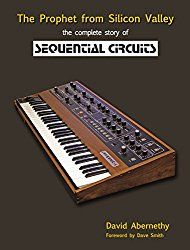



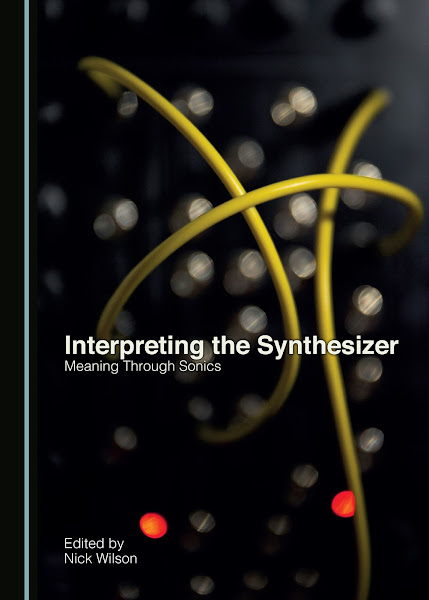
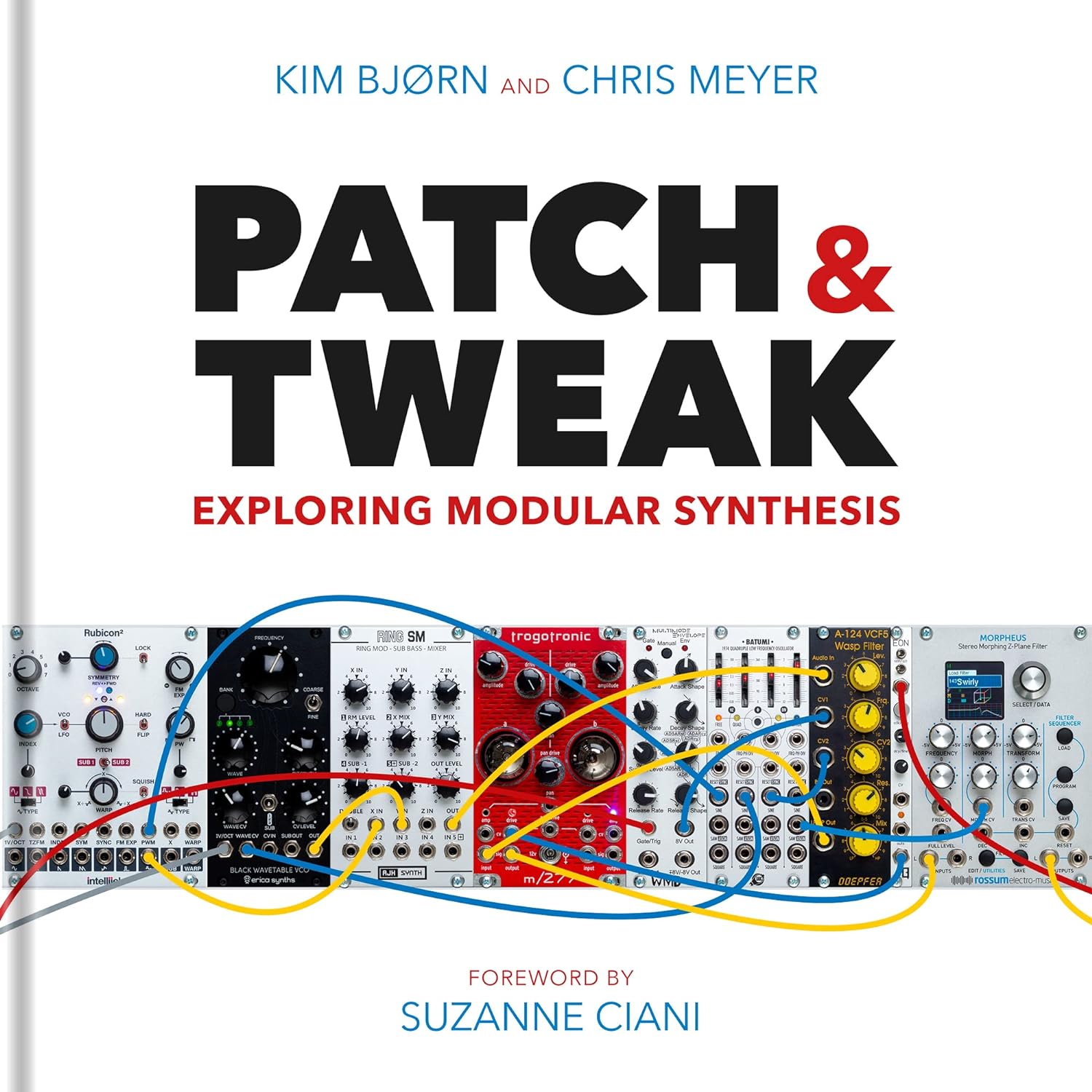

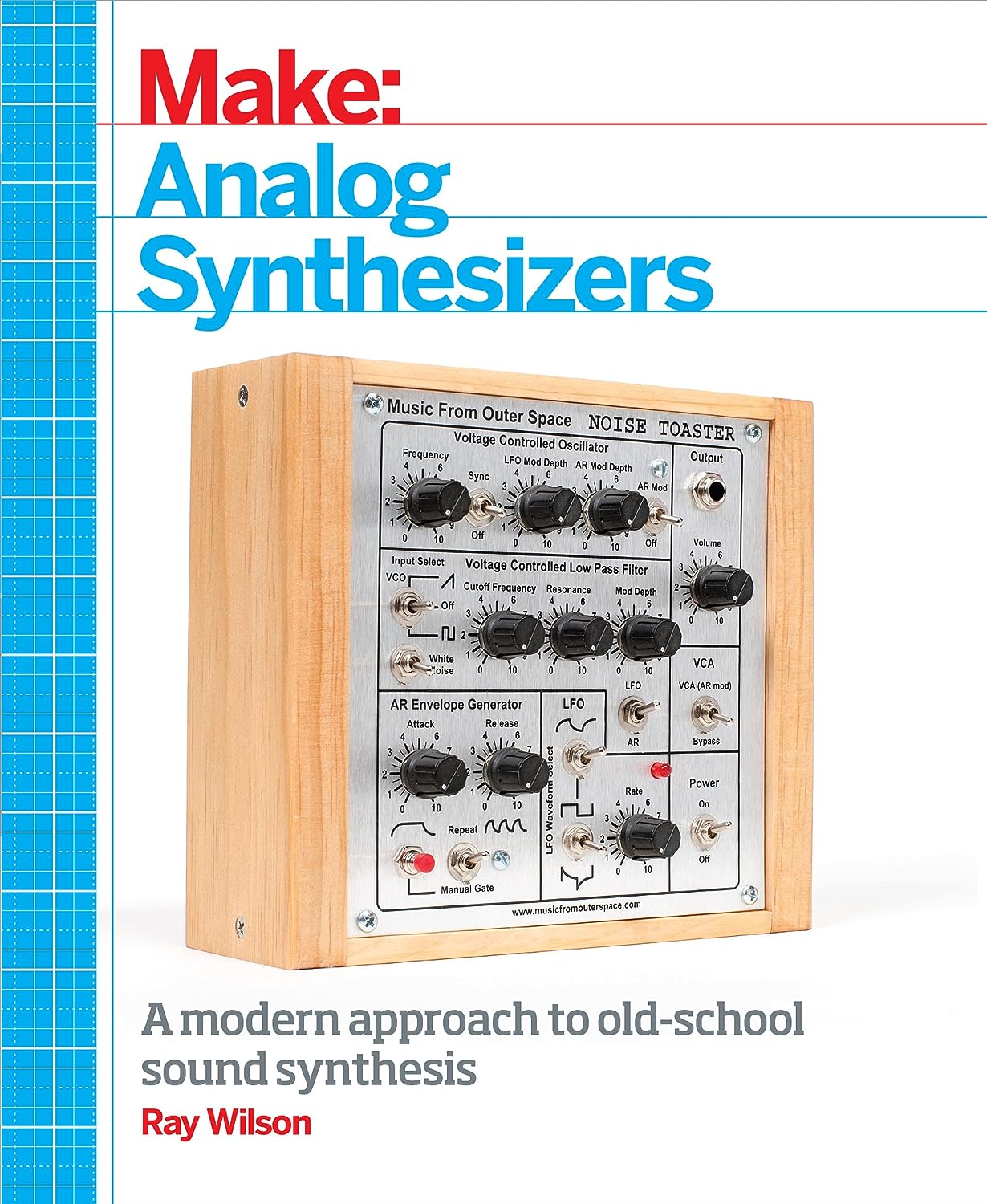

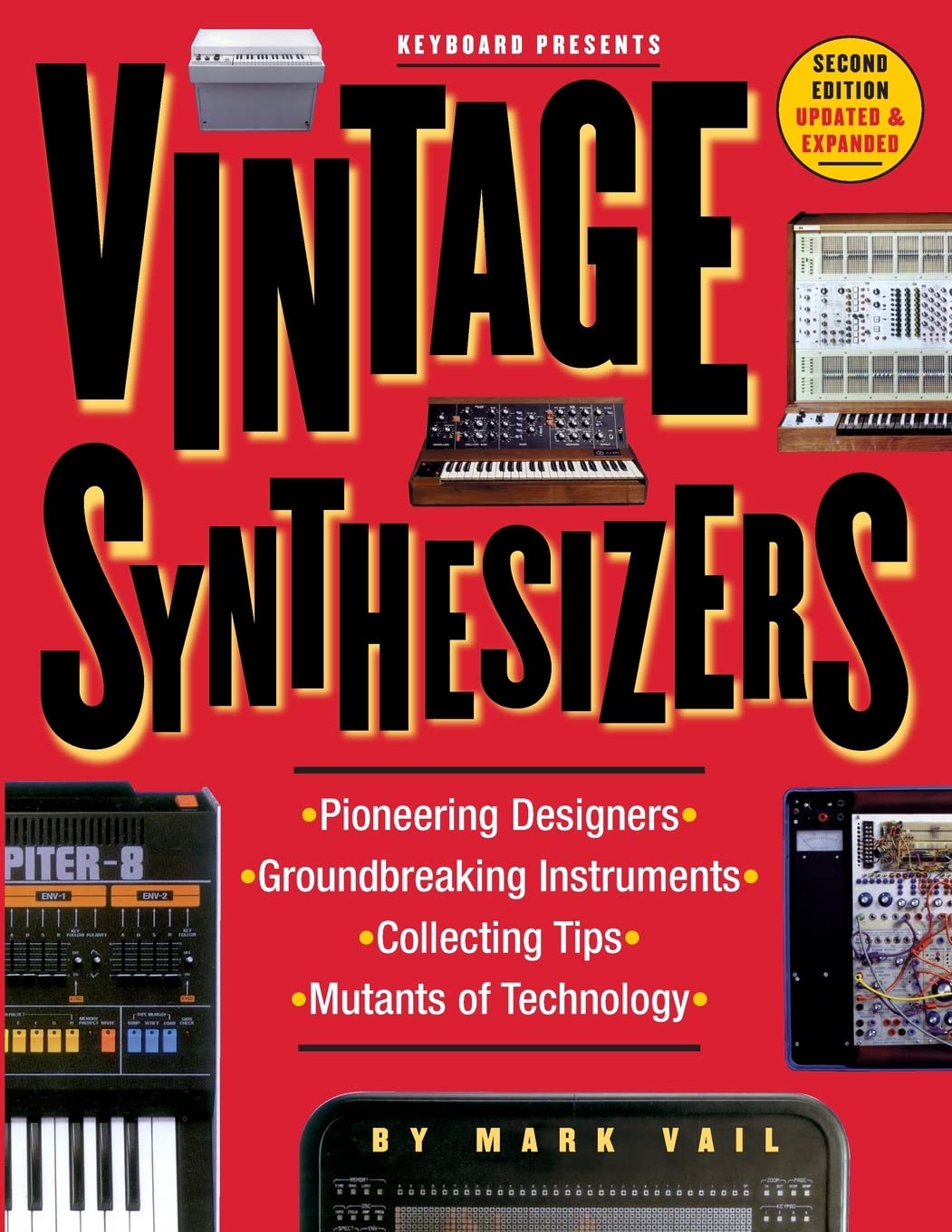
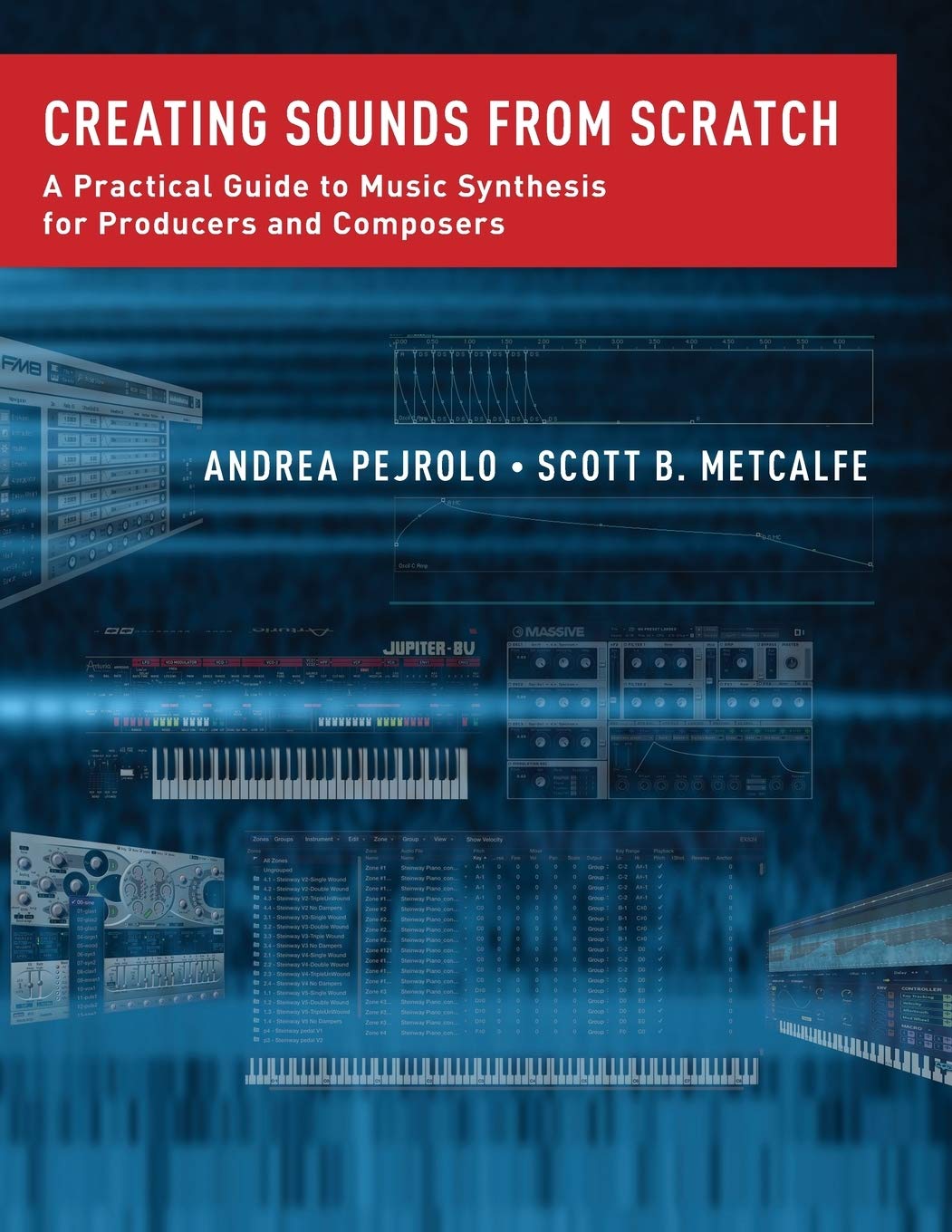
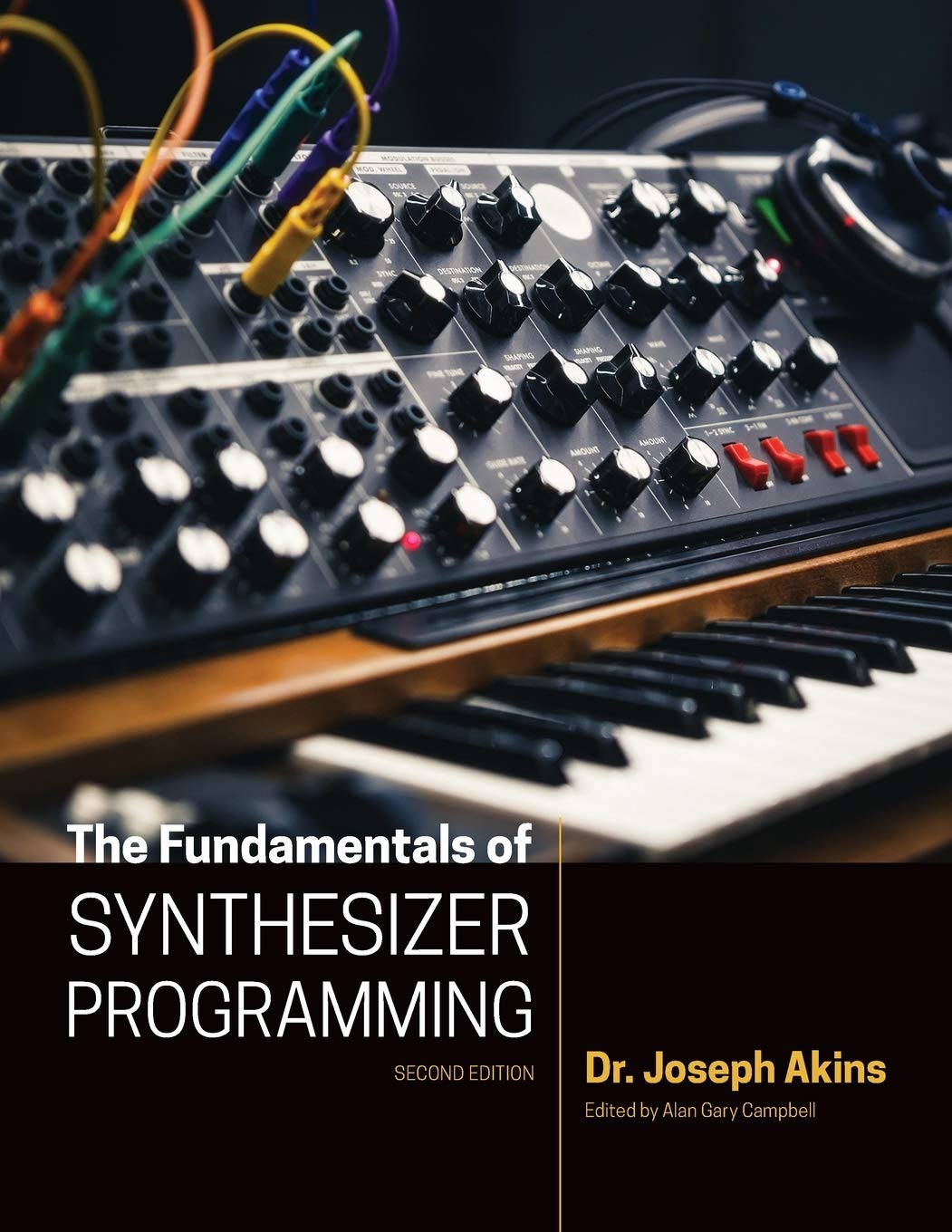

© Matrixsynth - All posts are presented here for informative, historical and educative purposes as applicable within fair use.
MATRIXSYNTH is supported by affiliate links that use cookies to track clickthroughs and sales. See the privacy policy for details.
MATRIXSYNTH - EVERYTHING SYNTH













© Matrixsynth - All posts are presented here for informative, historical and educative purposes as applicable within fair use.
MATRIXSYNTH is supported by affiliate links that use cookies to track clickthroughs and sales. See the privacy policy for details.
MATRIXSYNTH - EVERYTHING SYNTH


























